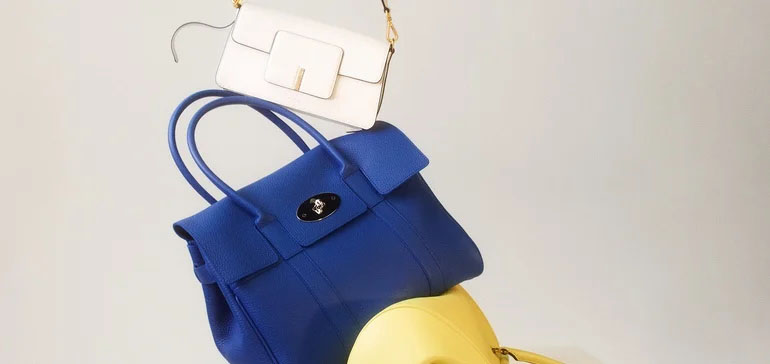Courtesy of Farfetch
Daphne Howland|Source: www.retaildive.com, August 2021
Poshmark, The RealReal and ThredUp each touted their unique advantages. But only one was profitable in the period.
Clothing resale is really as old as the neighborhood rummage sale, but in recent years it’s become digital, tech-enabled, embraced by all sorts of consumers and one of the fastest-growing segments of the apparel industry. Three major online secondhand clothing retailers — Poshmark, The RealReal and ThredUp — are now public companies, with varying business models, profitability levels and, perhaps, prospects.
The delta strain of the coronavirus is looming over the success that all three displayed in their earnings reports this week, but their chief executives mostly shrugged it off. ThredUp co-founder and CEO James Reinhart on a conference call said the variant so far isn’t changing the company’s thinking for the second half of the year, but that it’s watching it closely.
Similarly, The RealReal founder and CEO Julie Wainwright, in a conference call with analysts, called the variant a “wild card,” but also said the business had not felt “any impact at all” from it, in part because its customer base tends to be urban and vaccinated. Poshmark founder and CEO Manish Chandra said in a conference call the variant “will continue to sort of put a twist on the fashion and fashion demand” and that last year showed how hard that will be to predict. But, Chandra added, “The thing we do know is that our marketplace is pretty adaptable.”
ThredUp
ThredUp on Tuesday said that second quarter revenue rose 26.7% year over year to $60 million, with gross margin expanding to 73.6% from 69.7% at the same point last year. The company remains in the red, and net loss widened to $14.4 million, or 24% of revenue, from $6.7 million, or 14.1% of revenue last year.
Executives touted the company’s resale tech service, which has gained new clients including Madewell, Farfetch, Fabletics, Vera Bradley and the first non-apparel retailer, LG. The company doesn’t pull out revenue gleaned from its tech platform, according to a spokesperson.
Despite a 40% increase in its processing capacity, the company bag processing times have lengthened to 12 weeks on average across its distribution network; Reinhart said the company is expanding further to speed things up.
Wells Fargo analysts mostly dismissed that challenge, saying they view ThredUp’s inventory model as an advantage in a rapidly growing market, see promise in its expansion to Europe and estimate it could break even as early as next year.
“Now just two quarters in as a public company, [ThredUp] is continuing to show investors that its underlying business is on healthy footing as it builds scale and infrastructure to grow into the compelling resale [total addressable market],” Wells Fargo said.
The RealReal
While ThredUp is differentiated by its third-party tech platform, The RealReal is differentiated by its focus on luxury and its brick and mortar. Executives told analysts that stores provide the most effective marketing. The company runs 17 retail locations, including 13 “shoppable stores,” per its earnings release.
“It’s a very surgical, effective way to acquire new consigners. It’s, frankly, the tool that we didn’t really have previously,” said Chief Financial Officer Matt Gustke, but added that the company is slowing its store openings. “We’re going to learn some things, we’re going to optimize them, and we’ll come back and reassess what we do going forward.”
In the second quarter, revenue rose 83% year over year and 46% compared to 2019, to $104.9 million, as gross merchandise value rose 91% year over year and 53% from 2019 to $350 million. The RealReal was also in the red in the quarter, as net loss widened to $70.7 million from $43 million a year ago.
Wells Fargo analysts called the results “a mixed bag,” and said despite improvements in the top line numbers “profit uncertainty keeps the name in the penalty box in near-term.”
Poshmark
Poshmark has neither a tech platform to sell to other businesses nor stores to sell to customers — its differentiation is that it’s profitable.
Net revenue in the second quarter rose 22% year over year to $81.8 million, as gross merchandise value rose 25% to $449.6 million, according to a company press release. The company swung to a net income of $21.1 million, from last year’s $3 million loss.
Speaking to analysts, Chandra pointed out the advantages of operating a marketplace: “Our asset-light model holds no inventory, leading to some consistent high gross margins, resulting in a scalable and profitable business with a highly engaged community in loyal cohorts.”
Some analysts see it that way, too. “We believe [Poshmark] is well positioned in the attractive and still young resale market,” MKM Partners Roxanne Meyer said in emailed comments. “[W]e favor its marketplace/capital-light model, which we believe has better visibility for sustainable profitability vs. most other e-commerce peers.”
The company is in search of a new chief financial officer to replace Anan Kashyap, who has been there for five years and helped Chandra in its early days.
Follow Daphne Howland on Twitter

